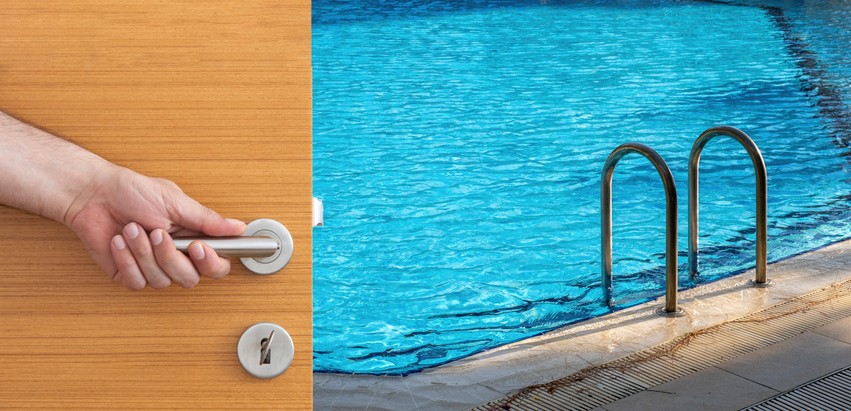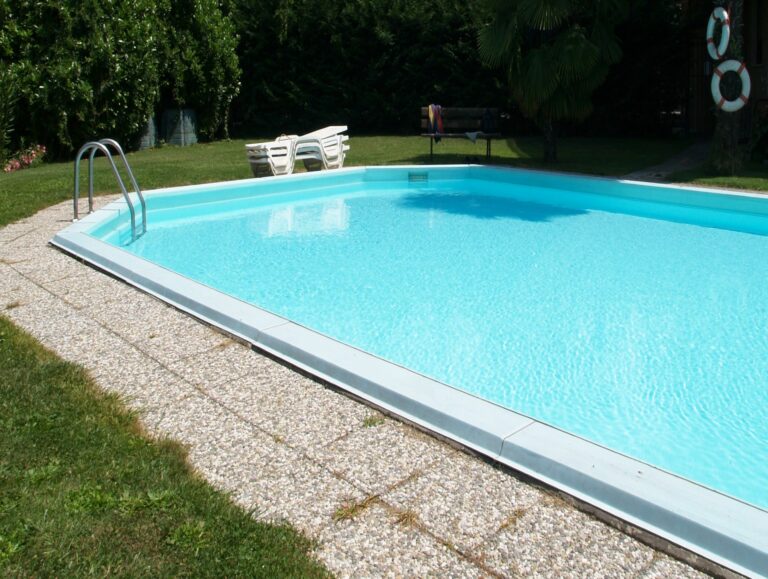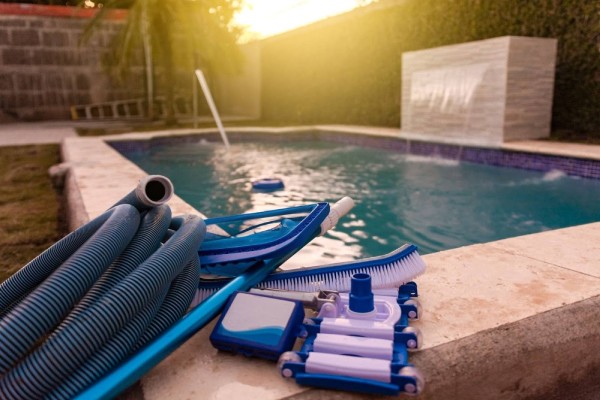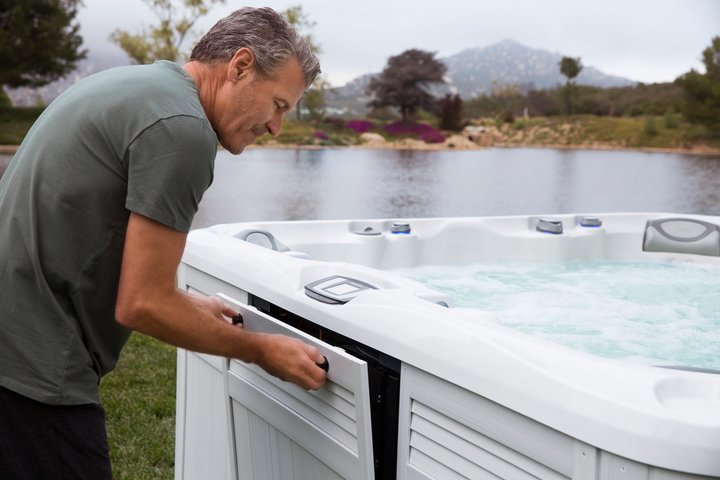When you close your pool in the fall and properly maintain it over the winter, pool opening it in the spring should be a breeze.
To start, sweep away any dirt or debris from the cover and surrounding deck.
Use a leaf blower if you have to. If there is accumulating water, use a pump or hose to siphon it off.
Turn on the pump and start the support system. Are there any leaks that you can notice?
If so, call your local pool opening experts to come out and take a look. You don’t want to start the season out on the wrong foot.
Complete Pool Opening Checklist – 13 Tips

Here are some more tips:
- Test your pH and adjust if necessary. At first, you’ll want to run the pump 24 hours a day so the water is properly balanced. Once you have the water condition where you want it, reduce that time by one-hour increments.
- Add algaecide. After a few hours, test the chlorine level and make any necessary adjustments.
- Take out all the supplies from storage and make sure you have everything you need. Make a note of what you’re running low on.
- Take off the pool cover and clean it. Make sure it dries first before you fold it up and store it.
- Reinstall the pump and filter and make sure they work.
- Put in all pool accessories, such as ladders, chairs, diving boards, and more. Put out the patio furniture and wipe it all down with a damp cloth.
- Remove any plugs and put the return outlet fittings back in their proper place.
- Using a hose, fill up the pool to your desired water level.
- Make sure all circuit breakers, switches, and time clock trippers are operating normally.
- Boot up the circulation equipment.
- Clean and vacuum the pool. Get out any leaves or debris that may have fallen in.
- Keep balancing the pH. You should test this every few days just to make sure it’s improving.
- Backwash the filter.
Pool Opening Troubleshooting
Things don’t always go as planned when you open your pool even when you follow every step to the letter.
Here are some things that may crop up and what to do about them:
- Leaks and drops from filter, pump, or pipes: Tighten the fittings. If that doesn’t work, call National Pools and Spas for a closer look.
- Sand in the pool: This could signal an underground leak or a crack in your sand filter. Inspect the filter to locate and fix the crack. If you are still losing water, it’s time to call in the pros. Don’t let this go too long; you can cause more damage.
- Not enough water pressure in the DE filter: Backwash the filter and add a new DE. Failing this, you may require an acid wash, which is something a professional should handle.
- Air bubbles are emitting from the return jets: There could be a suction line leak near the skimmers. You can dig down to locate the source, or call in a pool opening professional.
There are many things you can troubleshoot on your own, but sometimes, you just need a pool opening expert.
Here at National Pools and Spas, we have the tools, equipment, and training necessary to locate the source of the problem and fix it.





